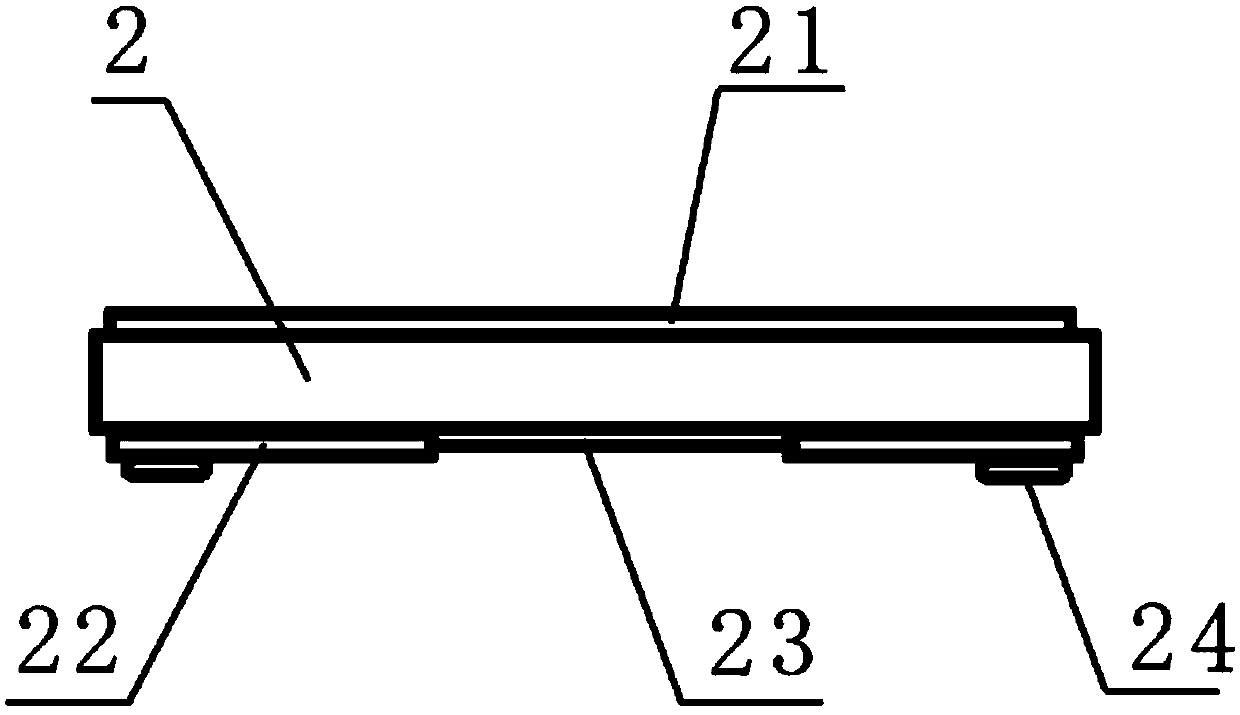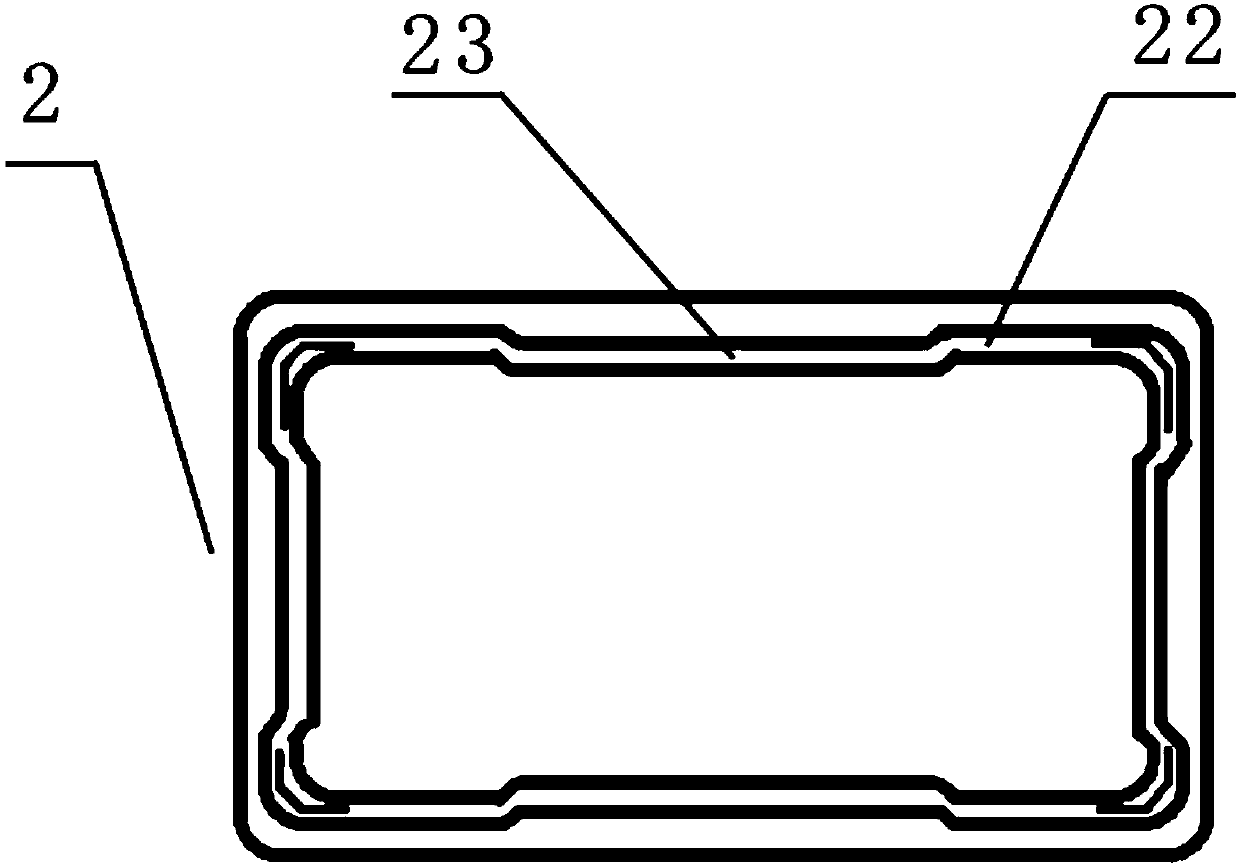Anti-counterfeiting identification box and anti-counterfeiting identification method
An identification box and anti-demolition technology, applied in the field of anti-counterfeiting identification and anti-counterfeiting identification box, can solve the problems of label damage, inability to achieve anti-counterfeiting effect, forgery, etc., and achieve the effect of enhancing anti-counterfeiting function, increasing cost and difficulty
- Summary
- Abstract
- Description
- Claims
- Application Information
AI Technical Summary
Problems solved by technology
Method used
Image
Examples
Embodiment 1
[0046] Such as figure 1 As shown, it is the front view of the body of the anti-counterfeiting identification box in this embodiment; as image 3 Shown is the front view of the cover of the anti-counterfeit identification box in this embodiment. An anti-counterfeit identification box provided in this embodiment includes a cover body 1 and a body 2. The cover body 1 and the body 2 together form an accommodating cavity for storing collections. The anti-counterfeit identification box provided in this embodiment further includes an anti-counterfeit electronic label, and the anti-counterfeit electronic label is arranged on the body 2 or the cover 1 or in the containing cavity. Preferably, a paper label and a laser stamping label are also provided on the body 2 or the cover 1 or in the accommodating cavity.
[0047] The tamper-proof sealing connection between the body 2 and the cover 1 means that the connection between the body 2 and the cover 1 can be through hot plate welding, vi...
Embodiment 2
[0110] The difference between this embodiment and Embodiment 1 is that the anti-transfer RFID electronic tag includes a chip, a PET substrate 101 , a first adhesive layer 102 , an aluminum etched antenna 103 , a second adhesive layer 104 and a fragile film 105 . Such as Figure 7 As shown, it is a schematic structural diagram of the RFID anti-transfer electronic tag in this embodiment. The first adhesive layer 102 is between the PET substrate 101 and the aluminum etching antenna 103. Preferably, the first adhesive layer 102 is polyether One or more of modified epoxy resin glue, acrylic modified epoxy resin glue, acrylic pressure-sensitive adhesive, and silica gel. catch. The RFID chip is connected with the antenna 103 etched in aluminum. The etched aluminum antenna 103 is assembled with the chip. Preferably, the etched aluminum antenna 103 is connected to the chip by flip-chip welding. The fragile film 105 is bonded on the aluminum etching antenna 103 through the second adh...
Embodiment 3
[0121] The difference between this embodiment and embodiment 1-2 is that: the first connecting portion is a groove, and the second connecting portion is a protruding tooth.
PUM
| Property | Measurement | Unit |
|---|---|---|
| radius | aaaaa | aaaaa |
| length | aaaaa | aaaaa |
| width | aaaaa | aaaaa |
Abstract
Description
Claims
Application Information
 Login to View More
Login to View More - R&D
- Intellectual Property
- Life Sciences
- Materials
- Tech Scout
- Unparalleled Data Quality
- Higher Quality Content
- 60% Fewer Hallucinations
Browse by: Latest US Patents, China's latest patents, Technical Efficacy Thesaurus, Application Domain, Technology Topic, Popular Technical Reports.
© 2025 PatSnap. All rights reserved.Legal|Privacy policy|Modern Slavery Act Transparency Statement|Sitemap|About US| Contact US: help@patsnap.com



